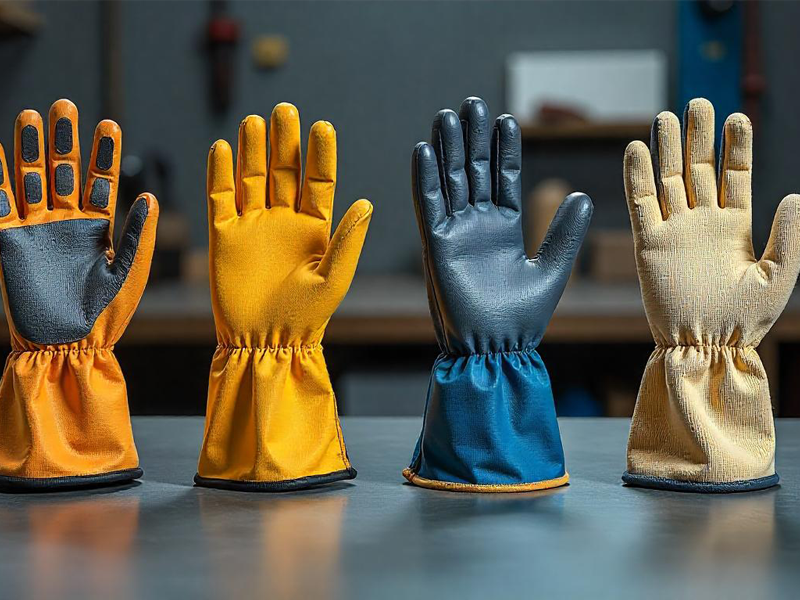🧤 Choosing the Right Safety Gloves for the Job
In the industrial world, hand protection is one of the most critical aspects of workplace safety. From construction sites and manufacturing units to chemical labs and warehouses, hands are constantly exposed to hazards — cuts, burns, abrasions, punctures, and chemical exposure. That’s why choosing the right type of safety gloves for the job isn’t just a good practice — it’s a necessity.
In this blog, we’ll walk you through the types of safety gloves, what they’re used for, and how to make the best choice based on your work environment.
🔍 Why Glove Selection Matters
Improper or low-quality gloves can:
- Lead to injuries and downtime
- Reduce productivity due to discomfort
- Cause non-compliance with safety regulations
- Cost more in the long run with frequent replacements
With so many glove types available, understanding the differences can protect your workers and boost efficiency.
🧪 1. Chemical-Resistant Gloves
Best For: Chemical handling, cleaning agents, laboratory work, pharmaceutical plants
Materials Used: Nitrile, latex, neoprene, PVC
Features:
- Resistant to solvents, oils, and acids
- Textured surface for grip in wet conditions
- Available in disposable or reusable versions
Tip: Always check the glove’s compatibility with the specific chemicals being used.
🔥 2. Heat-Resistant Gloves
Best For: Welding, foundries, baking industries, metalworking
Materials Used: Kevlar, aluminized fabric, leather
Features:
- Protects against burns, sparks, and heat
- Often comes with long cuffs for forearm protection
- Provides durability without compromising flexibility
Look for EN 407 certification for thermal protection.
🧷 3. Cut-Resistant Gloves
Best For: Sheet metal handling, glass cutting, assembly lines, carpentry
Materials Used: HPPE, Kevlar, stainless steel mesh
Features:
- Protects against sharp edges and tools
- Comes in different ANSI/EN cut levels
- Lightweight with high dexterity for precision tasks
Choose higher cut levels for heavier-duty tasks.
🛠️ 4. General-Purpose Gloves
Best For: Warehouse work, packaging, light assembly, maintenance
Materials Used: Cotton, polyester, PU-coated, nitrile-coated
Features:
- Good for abrasion protection and light tasks
- Affordable and comfortable for long use
- Often breathable and washable
Ideal for industries that require frequent glove changes.
⚡ 5. Electrical Insulated Gloves
Best For: Electrical maintenance, utility work, electricians
Materials Used: Rubber, composite materials
Features:
- Designed to prevent electric shock
- Available in voltage-rated classes
- Often used with leather protectors for durability
Always check class ratings based on voltage requirements.
✅ How to Choose the Right Glove
Consider the following before choosing a glove:
| Factor | What to Look For |
|---|---|
| Hazard Type | Cut, chemical, heat, electrical |
| Dexterity Required | Thick or thin material |
| Duration of Use | Comfort, breathability |
| Grip Needs | Textured or coated palms |
| Industry Standards | ANSI/EN/IS certification |
🧤 Safeco: Your Trusted Partner for Safety Gloves
At Safeco, we offer a wide range of industrial safety gloves engineered to meet global safety standards and tailored for industry-specific needs. Our gloves undergo rigorous testing for durability, comfort, and protection, making them ideal for high-performance environments.
Whether you’re handling heavy machinery, dangerous chemicals, or precision tools — we’ve got the perfect glove to keep your team protected.
📞 Ready to Protect Your Workforce?
Contact us today to get a free consultation on glove selection or to explore our latest safety glove catalog.

